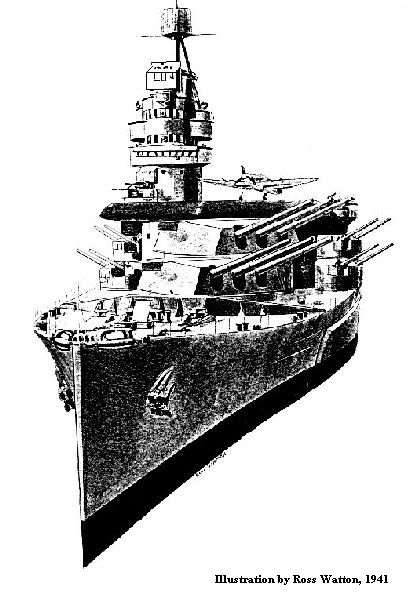



| Displacement | 45,000 tons |
| Armament | 2 x 3 16" (BB 3 X 3 16") DP AA |
| Aircraft | 24 (18 F, 6 TSR) |
| Speed | 33 knots |
| VTS Rating(s) | 3 6 7
|

The next step in the progression of British battleships from the KGV Class, these fine modern battleships would have resembled an enlarged and upgraded KGV and been a near-equivalent to the USN Iowa class. Conceived as a class of four ships in 1938 to counter the German 16"-gunned battleships being proposed, two began building in 1939. As British shipbuilding stalled during the war, work on these and other ships stopped in favor of large ships already nearing completion, and landing craft. In 1941, recognizing that aircraft would always be needed for the battlefleet, a scheme whereby the after turret was eliminated and a carrier deck erected was proposed. Though the immediacy of the war situation might warrant such ships, the ships were probably NOT going to be built before the war ended, and wiser heads looked to the post-war era to see if these hybrids would have a place in the Royal Navy. As did many navy's architects that toyed with such designs for ships, the Royal Navy found that the ships weak for BOTH gunnery engagements AND air battles. Even more forcefully stated by the Director of the Gunnery Division of Naval Plans, "...the conceptions of these...abortions are the result of a psychological maladjustment."
Perhaps the "Grand Fleet" world WAS psychologically maladjusted, as hybrid warships appeared in almost all navies. The "Lions" were intended to work in pairs, their combined aircraft equivalent to many of the RN's carriers, and their combined gunnery a respectable 12 barrels.
In late 1942 the pair was escorting a convoy in the Norwegian Sea when Peter Strasser's aircraft attempted to attack. The Spitfires from the hybrids harrassed the attacking aircraft enough to prevent them from reaching the convoy, forcing an attack on Lion herself, mistaken for RNN Molucca. After that seeming success, the pair was reassigned to the Mediterranean, and in the Ligurian Sea off Italy the German BC Gneisenau and two Italian battleships engaged. Aircraft from the hybrids had spotted, torpedoed, and slowed the German battlecruiser and Lion's main armament finished her off. The hybrids were now exposed to gunfire from Gneisenau and the Italian ships, eventually starting fires in the unprotected hangars of Lion. The flames spread, detonating the torpedo storage and sinking the ship. Tiger was also damaged in the engagement and retired. The Admiralty was not happy about the damage and resulting loss of Lion, but kept Tiger in the Med where she successfully engaged Cristoforo Colombo. Tiger herself got rather beat up and headed to Malta for repairs. The surrender of the Italian fleet and the decimation of the German fleet made Tiger superfluous and she was given to the Soviets at the end of the war. The Soviets were even less impressed, and Tiger was used as a target vessel to test new anti-ship missles.


